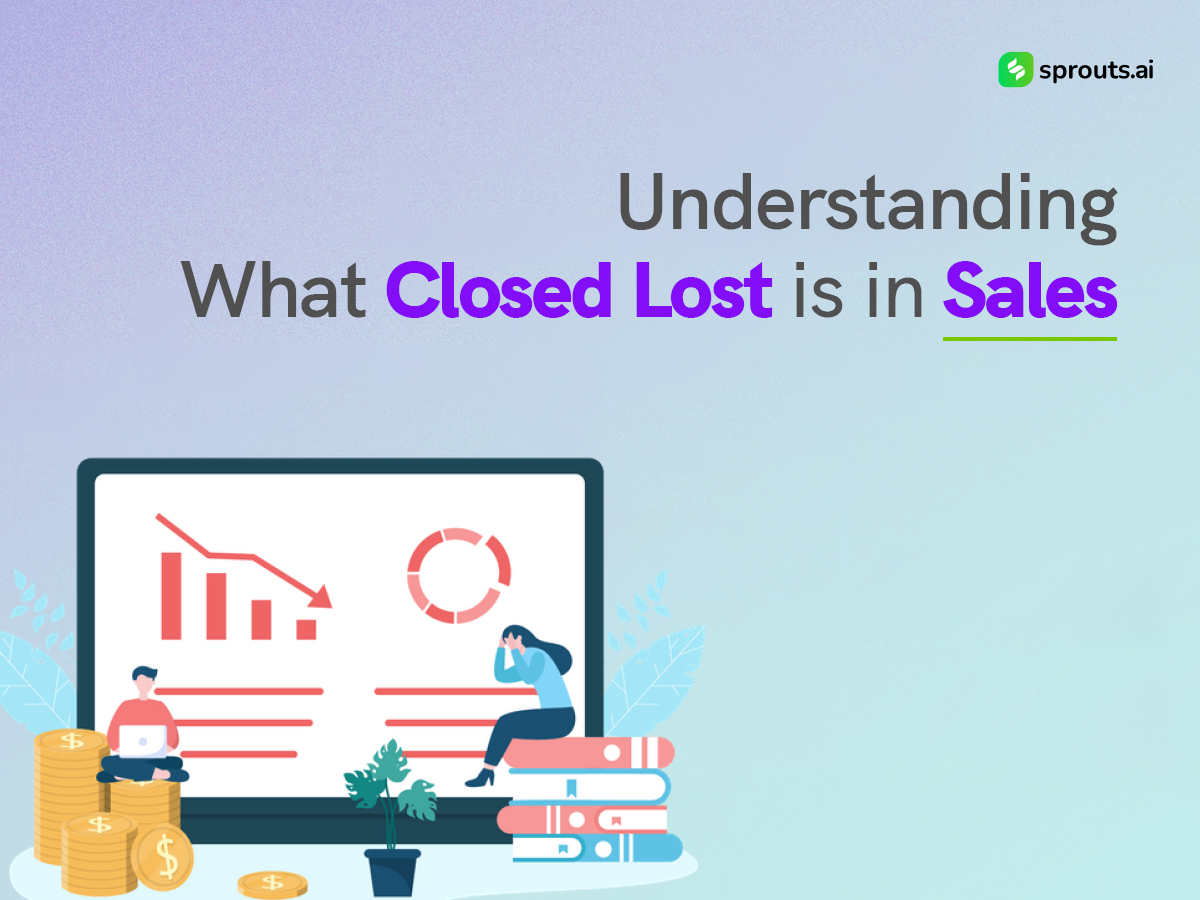In sales, a term holds both significance and intrigue: “Closed Lost.” While it might sound like a negative outcome, delving deeper into its meaning and impact reveals a wealth of insights that can reshape how businesses approach their sales strategies. In this blog, we will talk about the concept of ‘Closed Lost’ in sales, shedding light on its nuances and sparking contemplation about its implications.
What is Closed Lost in Sales?
At its core, ‘Closed Lost’ refers to a pivotal moment in the sales process when a potential deal fails to materialize into a successful transaction. It is the outcome where all the efforts, negotiations, and aspirations culminate in a decision against proceeding with the purchase. This outcome starkly contrasts its counterpart, ‘Closed Won,’ where the sale is successfully completed.
Imagine a scenario where a sales team diligently engages with a prospect, showcasing the product’s features and benefits, addressing concerns, and tailoring solutions. Despite these concerted efforts, the prospect decides not to purchase. This juncture is what we call ‘Closed Lost.’ It’s not merely a statistic or a checkbox; it encapsulates a wealth of information that can drive strategic improvements.
The Impact of Closed Lost on Businesses
Each ‘Closed Lost’ instance is a window into the prospect’s pain points, objections, and reasons for not converting. Businesses can identify recurring issues by dissecting these reasons and fine-tuning their offerings, messaging, or processes.
- Refinement of Sales Tactics: ‘Closed Lost’ scenarios encourage businesses to reevaluate their sales tactics. Were the objections adequately addressed? Was the value proposition effectively communicated? Did the prospect encounter any obstacles that could be overcome in future interactions? These questions prompt refinement and growth.
- Enhanced Customer Understanding: Delving into ‘Closed Lost’ cases helps businesses better understand their target audience. It allows them to discern between genuinely uninterested prospects and those who were almost convinced but lacked a final nudge. This understanding informs segmentation and targeting efforts.
- Empowerment of Sales Teams: Navigating ‘Closed Lost’ situations fosters resilience and adaptability within sales teams. It encourages them to learn from setbacks, pivot strategies, and approach each engagement with a continuous improvement mindset.
- Leveraging Feedback for Innovation: ‘Closed Lost’ feedback can serve as a wellspring of innovation. By listening to prospects’ concerns and suggestions, businesses can innovate products, services, or features that directly address unmet needs, potentially turning ‘Closed Lost’ instances into future success stories.
- Long-term Relationship Building: Even in ‘Closed Lost’ scenarios, maintaining a positive rapport with the prospect can yield long-term benefits. Regular communication, sharing valuable insights, and demonstrating genuine interest can position the business as a trusted partner, increasing the likelihood of future opportunities.
Navigating the Emotional Landscape
While ‘Closed Lost’ is an integral part of the sales journey, it can evoke various emotions within sales teams. Frustration, disappointment, and a sense of rejection are not uncommon reactions. However, a shift in perspective can transform these emotions into catalysts for growth.
Instead of viewing ‘Closed Lost’ as a defeat, consider it an opportunity to learn, adapt, and forge stronger connections. Embrace it as a chance to understand the prospect’s unique needs and motivations more deeply. Every ‘Closed Lost’ encounter is a step closer to refining the sales approach and achieving ‘Closed Won’ victories.
Turning Insights into Action
To leverage the power of ‘Closed Lost’ insights, businesses can implement the following strategies:
- Thorough Analysis: Review ‘Closed Lost’ cases regularly to identify patterns and common objections. Look for opportunities to address these concerns proactively in future interactions.
- Feedback Integration: Actively seek feedback from prospects who choose not to proceed. Constructive criticism can drive innovation and lay the groundwork for future conversions.
- Continuous Training: Provide sales teams with ongoing training and resources to enhance objection-handling skills, refine messaging, and build rapport with prospects.
- Personalization: Tailor sales pitches and solutions based on the specific pain points and objections raised by ‘Closed Lost’ prospects. Demonstrating a deep understanding can rekindle interest.
- Holistic Relationship Building: Maintain communication with ‘Closed Lost’ prospects, sharing industry insights, updates, and success stories. This positions the business as a valuable resource, fostering trust.
‘Closed Lost’ in sales is far more than a transactional outcome; it is a treasure trove of insights that can shape the trajectory of a business. By understanding the reasons behind ‘Closed Lost’ scenarios and using these insights to fuel strategic improvements, businesses can transform setbacks into stepping stones toward success. Embracing ‘Closed Lost’ not as a defeat but as an opportunity enables growth, innovation, and the cultivation of lasting customer relationships. So, let us embrace learning and evolution, where each ‘Closed Lost’ becomes a catalyst for a brighter sales future.
Remember, what is ‘Closed Lost’ today might be the key to ‘Closed Won’ tomorrow.

